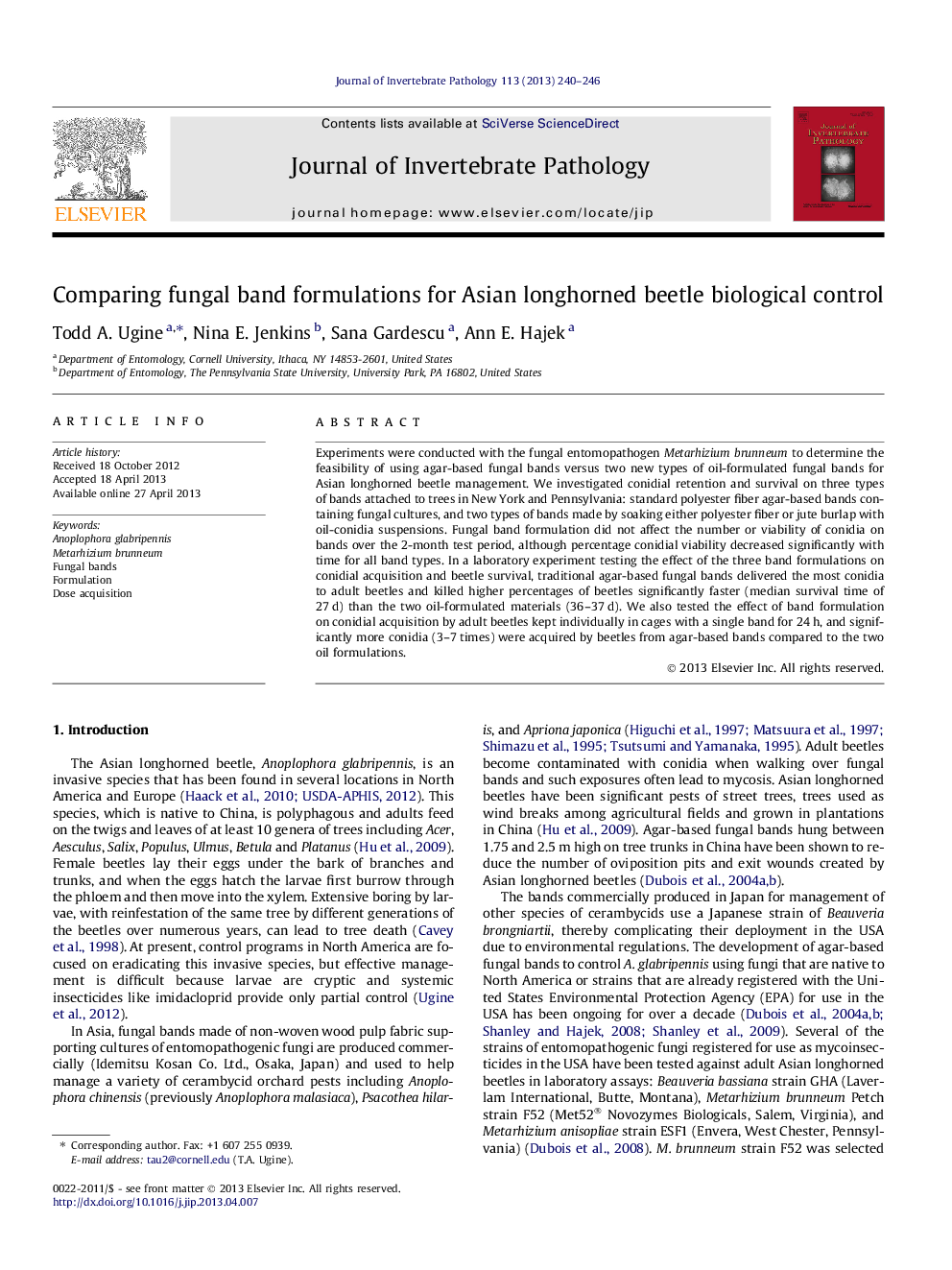| Article ID | Journal | Published Year | Pages | File Type |
|---|---|---|---|---|
| 4557816 | Journal of Invertebrate Pathology | 2013 | 7 Pages |
•Fungal band formulation did not affect number or viability of conidia over time.•More conidia were acquired by beetles from agar bands versus the two oil formulations.•Agar bands killed beetles significantly faster than the two oil-formulated materials.
Experiments were conducted with the fungal entomopathogen Metarhizium brunneum to determine the feasibility of using agar-based fungal bands versus two new types of oil-formulated fungal bands for Asian longhorned beetle management. We investigated conidial retention and survival on three types of bands attached to trees in New York and Pennsylvania: standard polyester fiber agar-based bands containing fungal cultures, and two types of bands made by soaking either polyester fiber or jute burlap with oil-conidia suspensions. Fungal band formulation did not affect the number or viability of conidia on bands over the 2-month test period, although percentage conidial viability decreased significantly with time for all band types. In a laboratory experiment testing the effect of the three band formulations on conidial acquisition and beetle survival, traditional agar-based fungal bands delivered the most conidia to adult beetles and killed higher percentages of beetles significantly faster (median survival time of 27 d) than the two oil-formulated materials (36–37 d). We also tested the effect of band formulation on conidial acquisition by adult beetles kept individually in cages with a single band for 24 h, and significantly more conidia (3–7 times) were acquired by beetles from agar-based bands compared to the two oil formulations.
Graphical abstractFigure optionsDownload full-size imageDownload as PowerPoint slide
